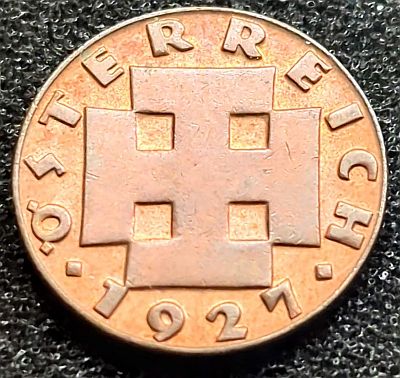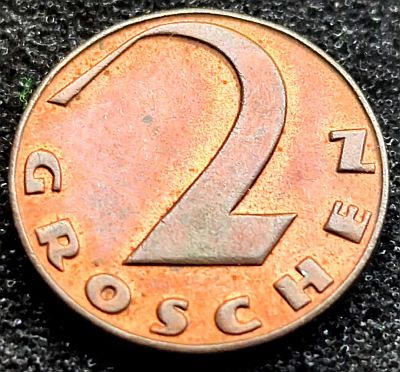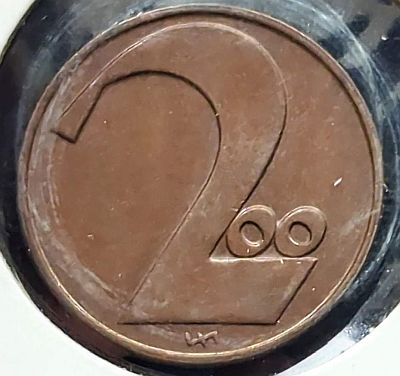A coin with an interesting font
Obverse

The obverse of the coin features the country name (“Österreich”, in German) and the year. I really like the font, the shape of the numbers, and the lightning bolt-type “s”.
The main design on the obverse of the coin is known as a “Cross portent” – a cross with bars of equal length with crossbars at the four ends.
Some believe the Cross Potent to be made up of four “Tau crosses“. Tau is the last letter of the Hebrew alphabet. It is important in various bible passages. In Ezekiel 9:4, the Tau is the mark placed on the forehead of those who were saved. Also, because the “T” shape is almost reminiscent of the Cross of Christ. It was adopted by St Francis and is still worn by Franciscan friars today.
Both the cross portent and the tau cross have been used for many centuries. In 1191 Emperor Henry VI formed the Teutonic Order using the Cross Potent as its symbol. The order was founded as a hospital order.
Reverse

I realised as I picked out this coin to write up, that I like the number 2, or maybe it is the way it is artistically presented on coins sometimes. One of the first coins I wrote about here was the Hungary 2 Forint with its distinctive 2. The 1838 Denmark 1/2 Rigsbankskilling also springs to mind for it’s 2 (ok, it’s part of “1/2” in that case).
Interestingly, although the font appears similar on each side, some of the letters which are repeated are done differently. The 2 itself is similar although differently proportioned on each side. The S in the country name is quite different to the S in the denomination. The R has a slightly different foot, but is otherwise similar, and the O, C, H and E are all quite similar.
The Groschen
Formed in 1919 in the aftermath of WWI, Austrian initially used the Krone, divided into 100 Heller. This was not dissimilar from the “Austro-Hungarian “Crown” which had preceded it. In 1925, Austria introduced the Schilling as the currency. This decimal currency was divided into 100 Groschen.
The design of the 2 Groschen coin is very similar to that of the 200 Heller coin which preceded it. The obverse is identical. The reverse contains the same “2” with a small “00” and no written denomination. The mark under the 2 is believed to be the engraver’s mark of Filip Häuslerr.



Leave a Reply